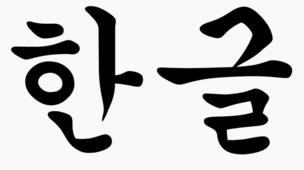Basic info about Hangul
To post about Hangul(Korean Language) is one of my long goals about the blog and today's post is the start.
Personally, I am planning to post about Korean Language(Hangul) too in this blog and try to help anyone who wants to study Korean.
I am not sure whether it will work properly or not but let's just do it!
What is Hangul?
Hangul(from Korean 한글 [ha(ː)n.ɡul]) is the Korean alphabet which has been used to write the Korean language since its creation in the 15th century by King Se Jong.
The alphabet consists of 19 consonants and 21 vowels. Instead of being written sequentially, like the letters of the Latin alphabet, Hangul letters are grouped into syllabic blocks.
For example, the Korean word for "Love" is written 사랑, not 사라ㅇ. As it combines the features of alphabetic and syllabic writing systems, Hangul has been described as an "alphabetic syllabary" by some linguists.
Who made Hangul?
King Se Jong
When Hangul was created?
In 1446.
Why Hangul was created?
Before the creation of Hangul, Koreas primarily wrote using Classical Chinese alongside native phonetic writing systems that predate Hangul by hundreds of years, including Idu, Hyangchal, Gugyeol, and Gakpil. However, due to the fundamental differences between the Korean and Chinese languages, and the large number of characters needed to be learned, many lower class Koreans were illiterate. In order to promote literacy among the common people, King Sejong, the fourth king of the Joseon dynasty, personally created and promulgated a new alphabet.
What is Hun Min Jeong Eum?
The Hangule creation project was completed in late December 1443 or January 1444, and described in 1446 in a document titled Hunminjeongeum (훈민정음 : The Proper Sounds for the Education of the People"), The publication date of the Hun min jeong eum was October 9 and it became Hangul Day in South Korea. Its North Korean equivalent, Chosŏn'gŭl Day, is on January 15.
What is Hun Min Jeong Eum Hae Rye?
A 1446 document titled Hunminjeongeum Haerye ("훈민정음 해례 Hunminjeongeum Explanation and Examples") was discovered in 1940 in South Korea. This document(book) explains that the design of the consonant letters are based on articulatory phonetics and the design of the vowel letters are based on the principles of yin(음) and yang(양) and vowel harmony(조화).

Hi! I am a robot. I just upvoted you! I found similar content that readers might be interested in:
https://en.wikipedia.org/wiki/Hangul
thank you, I will check the link too.